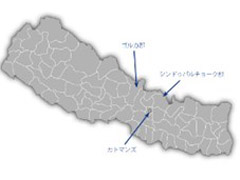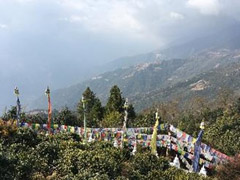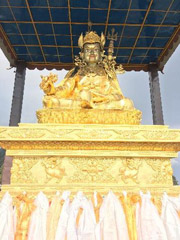- Home
- Technical Cooperation Projects
- Index of Countries
- Asia
- Nepal
- The Project on Participatory Rural Recovery
- Project News
- About Our Pilot Locations (Part 3) Helambu Rural Municipality, Sindhupalchowk District - Where Tibetan Buddhist Culture Flourishes -
Project News
2021-01-04
About Our Pilot Locations (Part 3)
Helambu Rural Municipality, Sindhupalchowk District
- Where Tibetan Buddhist Culture Flourishes -
Following Barpak Sulikot Rural Municipality (Gorkha), and Chautara Sangachowkghadi Municipality (Sindhupalchowk) which we have introduced in this series, Helambu Rural Municipality (hereinafter referred to simply as ‘Helambu) is the third pilot locations.
Located at about 80 km northeast of Kathmandu, Helambu is a hilly village which boasts untouched beauty of the mother nature, and it is the starting point for trekking in the Shivapuri Nagarjun National Park and the Langtang National Park. Agriculture is the main economic sector in Helambu, with cultivation of apples and other fruits in many places. In recent years, rainbow trout farming has become increasingly popular in Helambu, by taking advantage of the clear river water that comes down from the Himalayan mountains as high as 8,000 km.
Helambu is also believed to be the place where Padmasambhava - the founder of Vajrayana Buddhism in Tibet who is often venerated as a second Buddha by Buddhists in Tibet and surrounding countries - stayed during his ascetic practice. Given such historical importance, many Nepali people come to Helambu for pilgrimage and visit numerous Buddhist stupas and Buddha statues in the area.
 Location of Sindhupalchowk District in the map of Nepal.
Location of Sindhupalchowk District in the map of Nepal.
Source: JICA Official Website
In Nepal, 80% of the total population is Hindu, while Buddhist accounts for about 10%. However, as much as 70% of the people in Helambu are Buddhist, because Helambu Rural Municipality shares its northern border with Tibet and the majority of its population belong to Tibetan ethnic groups such as Tamang, Hyolmo, and Sherpa. Therefore, many residents of Helambu have facial features similar to those of Japanese. In addition, Buddhist stupas and Tibetan flags are everywhere, which gives very different landscapes from other regions of Nepal. Nepal is considered to be one of the most culturally diverse, multi-ethnic nations in the world, having more than 100 ethnic groups within its border. A journey from the capital city Kathmandu to Helambu gives us a real opportunity to experience the country's cultural diversity.
 A typical landscape in Helambu, with five-colored flags of Tibetan Buddhism fluttering in the air.
A typical landscape in Helambu, with five-colored flags of Tibetan Buddhism fluttering in the air.
 A statue of Padmasambhava, the founder of Tibetan Buddhism, who is said to have stayed in Helambu during his ascetic practice.
A statue of Padmasambhava, the founder of Tibetan Buddhism, who is said to have stayed in Helambu during his ascetic practice.
Chairperson[1] of Helambu Rural Municipality always tells us enthusiastically that he wants to promote the tourism sector as a driving force for post-earthquake recovery, by taking advantage of Helambu's proximity to the famous Langtang range of the Himalayas as well as its numerous Buddhist pilgrimage sites.
More updates on the actual project activities in Helambu will be featured on this website soon. Stay tuned!
Note
- [1] In Nepal, the head of Urban Municipalities are "Mayors", and head of Rural Municipalities are "Chairpersons". Helambu is a Rural Municipality, therefore the head is referred to as "Chairperson".
- About JICA
- News & Features
- Countries & Regions
- Our Work
- Thematic Issues
- Types of Assistance
- Partnerships with Other Development Partners
- Climate Change / Environmental and Social Considerations
- Evaluations
- Compliance and Anti-corruption
- Science and Technology Cooperation on Global Issues
- Research
- JICA Development Studies Program / JICA Chair
- Support for the Acceptance of Foreign HRs / Multicultural and Inclusive Community
- Publications
- Investor Relations
